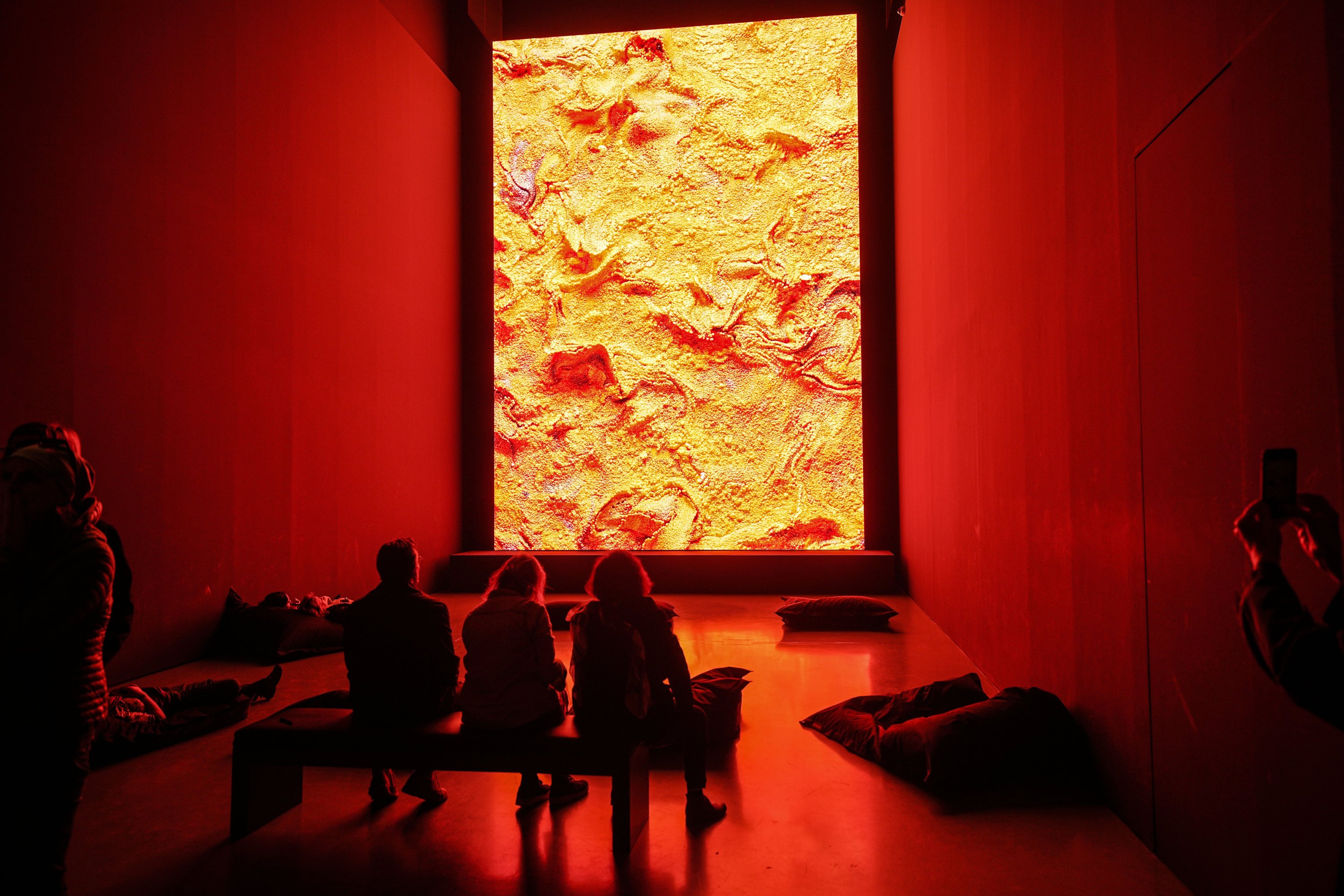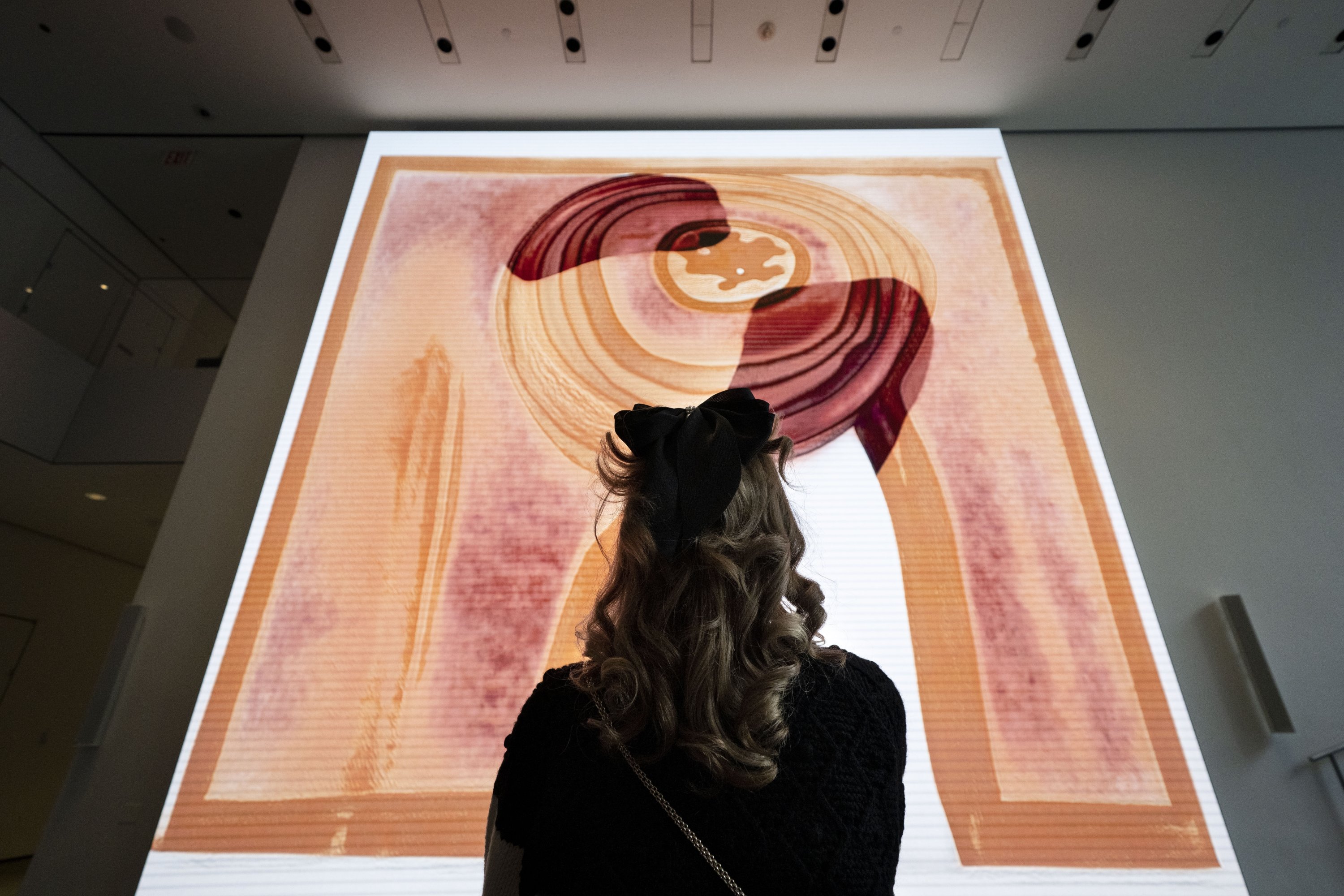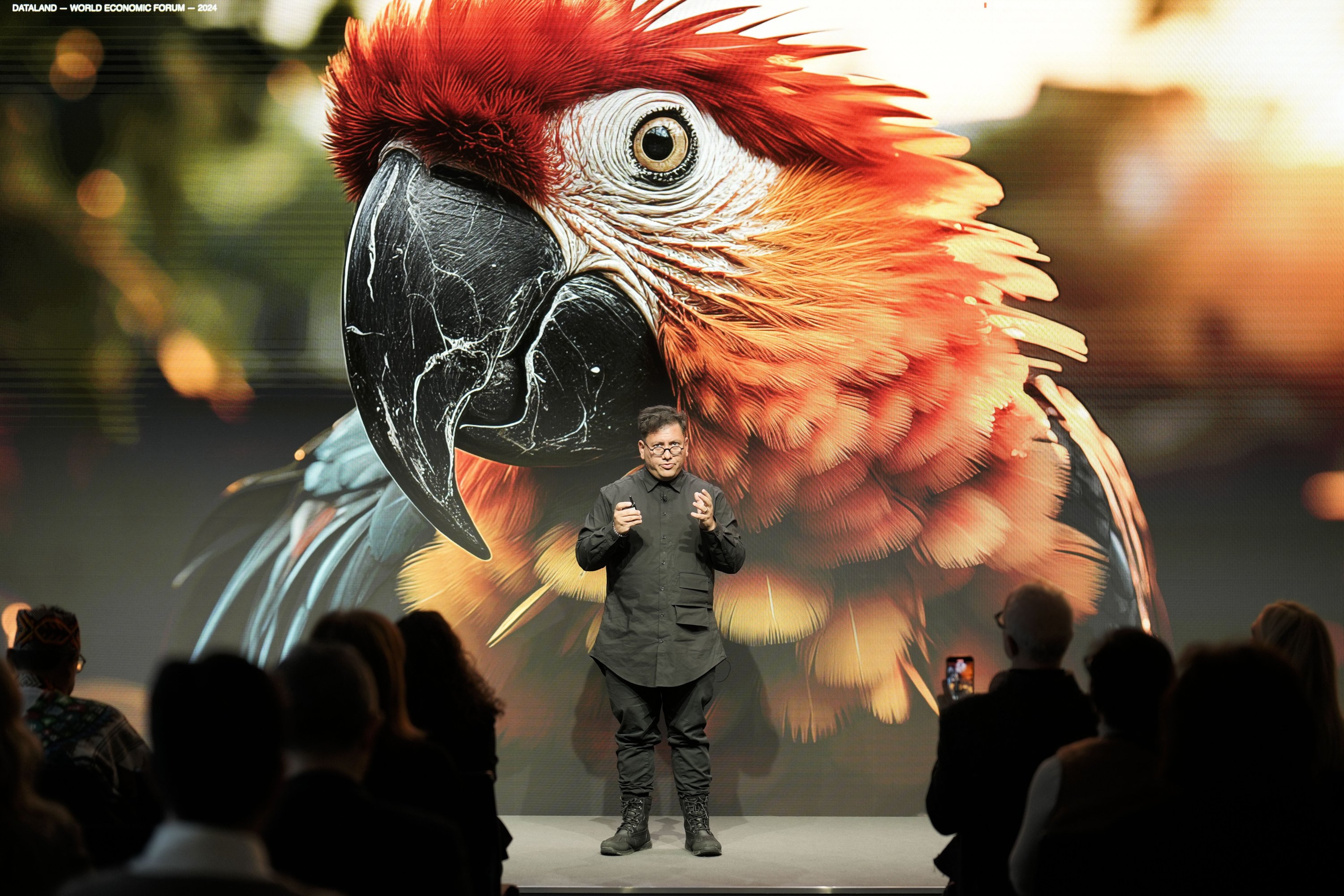© Turkuvaz Haberleşme ve Yayıncılık 2025
The artist who most extensively utilizes artificial intelligence (AI) technologies in the field of art is Refik Anadol. He takes art to a new dimension with AI, demonstrating its power in public spaces through collaborations with technology giants such as Microsoft, Google, Nvidia, Intel, IBM and Siemens. In each thematic project, Anadol trains his AI models using vast datasets from that specific field, allowing the model to "dream." He then transforms these machine dreams into dynamically undulating images on the screen by employing fluid simulation models. Fluidity is a key characteristic in all of Anadol’s works – nothing remains static; everything is in constant flux, flowing within its own temporal scale. His project "Melting Memories" perfectly emphasizes just how fluid memories truly are.
The focus of Anadol’s work revolves around the concept of machines dreaming or hallucinating. In his own words, as the algorithm constructs its memory based on the data it learns, it is encouraged to experience creative dreams and hallucinations derived from this memory. "Since 2012, RAS (Refik Anadol Studio) has been conducting interdisciplinary research on the interconnection of the human mind, architecture and aesthetics in an effort to answer this question: If machines can learn or process individual and collective memories, can they also dream or hallucinate about them? After experimenting with digital paintings and sculptures of architectural data and exhibiting data-based immersive projections in public spaces, RAS started working with AI programs and machine learning algorithms using a diversity of data, be it visual, auditory, seismic, geographic, cultural or institutional."
RAS’s first comprehensive work was an interactive media installation titled "Archive Dream," exhibited in Istanbul in 2017. This project was created using 1.7 million archival records spanning from the 17th to the 20th century, processed through machine learning algorithms. One of the most significant outcomes of this work was the generation of new images that could have existed in the archive but did not actually exist — precisely as intended. In other words, AI was made to hallucinate to create new, imagined archives. As a result, the real archive and the AI-generated dream archive became intertwined. Building on this thematic approach, RAS took his work to a new level with the Walt Disney Concert Hall Dreams (WDCH Dreams) project, where he enabled the building to "dream" by drawing upon its memories.

His thematic projects were followed by "Machine Hallucinations: Nature Dreams," "Machine Hallucinations: Space," and, in the spring of 2022, a collaboration with the Philadelphia Orchestra titled "Beethoven: Missa Solemnis 2.0." One of his earlier works, "Infinity Room," developed in 2015 and first presented at the 2015 Istanbul Biennial, was an immersive project that sought to merge the infinity of space with the infinite variations of machine intelligence. Visitors were welcomed into a 360-degree mirrored room, where they experienced an interplay of light, sound and visuals. Anadol continues to add new dimensions to existing works through highly specific public art projects, such as In the Mind of Gaudí and the Casa Batlló project, bringing art into public spaces in innovative ways.
In RAS projects, AI learns from existing data within a given thematic domain and establishes new relationships based on this memory, generating entirely new creations – or, in Anadol’s words, "dreaming." To emphasize the artistic dimension of the output, the term "hallucination," commonly associated with AI, is frequently used. However, this raises an important question: What exactly is the relationship between AI and hallucination? A closer examination of this connection is necessary.
In academic literature, AI hallucination is commonly used to describe a phenomenon in which an AI system generates a response that appears convincing and contextually coherent but is entirely fabricated, lacking any basis in user input or previous context. As a result, generative AI outputs may seem reasonable but can actually be meaningless or incorrect. For instance, studies evaluating the frequency of AI hallucinations in research proposals generated entirely by ChatGPT have demonstrated that many of the references provided in such outputs do not actually exist. Generally, when generative AI produces content based on its training dataset, it may enter a hallucination phase, where it loses its connection to the original data sources and fabricates content instead. Furthermore, once AI generates incorrect information, it may continue producing more incorrect content in a self-consistent manner – a phenomenon known as the snowball effect of hallucination.

AI hallucinations in generative models are not the result of a cognitive process but rather stem from the probabilistic nature of the model and its relationship with the training dataset. On the other hand, using the term hallucination to describe the false outputs generated by large language models (LLMs) can be misleading. This term implies that LLMs consciously perceive sensory input, whereas generative AI lacks consciousness, meaning it does not have subjective experience or awareness. For this reason, some researchers argue that AI does not "see" something that isn’t there but rather fabricates information.
Therefore, the term hallucination may not be the most accurate way to describe this phenomenon. Instead, the psychiatric concept of "confabulation" has been proposed as a more precise analogy. Confabulation refers to the unintentional creation of false but seemingly coherent narrative details, even when the individual is unaware that they are false. Notably, generative AI tends to produce fabricated content more frequently in narrative-based texts. Moreover, humans also engage in confabulation, often filling gaps in their narratives with fictional but plausible details, even without any malicious intent.
Whether defined as hallucination or confabulation, this behavior in AI poses significant risks in fields like health care and education, where incorrect treatment recommendations, flawed educational content or unreliable information can have serious consequences. As a result, many efforts are underway to mitigate this issue in AI systems. However, recent studies suggest that in certain innovative domains, such as art, architectural design or the discovery of new proteins, this very behavior may hold creative value. Anadol fully embraces this aspect of AI in his work, highlighting its ability to generate unexpected, dreamlike and novel outputs. His projects leverage AI's tendency to create new relationships between data points, using this hallucination-like process as a core artistic tool.

As Anadol himself explains, his thematic projects begin with processing large datasets related to a specific domain – such as city archives, nature imagery or musical compositions – using deep learning. This process generates a digital memory, which then serves as the foundation for AI to focus on new relationships within the data, effectively "dreaming" or "hallucinating."
In other words, deep learning models trained on large datasets produce hallucinatory visuals when dealing with data gaps, complex patterns or contradictory inputs. These AI-generated images blend reality and virtual elements, creating an altered perception for the viewer.
By applying this approach, Anadol blurs the boundaries between time and space, enabling an archive to "dream" based on historical collections or a building to "dream" based on its own historical witnesses. This technique introduces a new form of narrativity, reshaping how we experience history, memory and space.
A recent example of this approach was seen in Anadol’s exhibition "Dreams of the Earth: Anatolia," held at the Museum of Anatolian Civilizations during the Ankara Culture Road Festival at the end of September 2023 in Türkiye, organized by the Ministry of Culture and Tourism.
In summary, Anadol does not merely create visual experiences with AI; he engages viewers in a deeply immersive, multi-layered artistic experience that fosters both physical and emotional interaction with his work.
